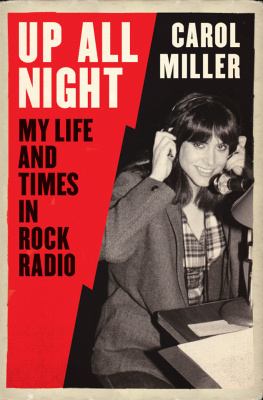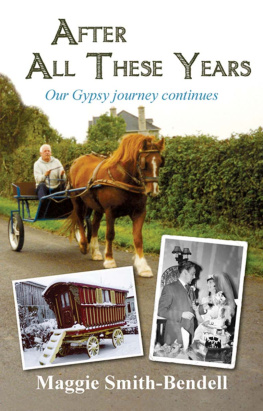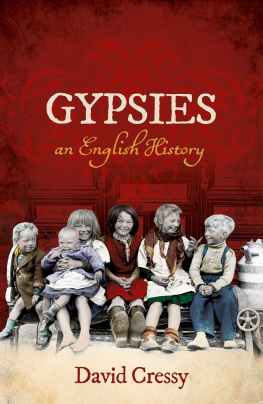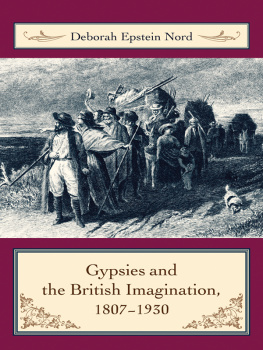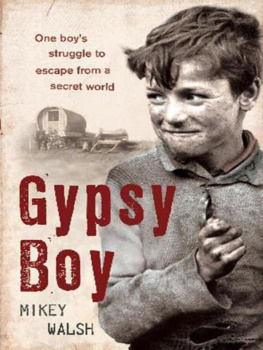Praise for
Lolas Luck:
My Life Among the California Gypsies
A wild and bittersweet adventure into a world none but Machvaia Gypsies know.
Susan Sarandon
Lolas Luck is a nourishing Romani studies stew freshly cooked up as a romantic self-narrating potboiler. This very private recipe for general consumption is an affable and affordable book-gift from Carol Miller, one of the most widely-cited among contemporary American Romani-studies scholars, and a specialist on California Machvaia customs and ritual behavior.
David J. Nemeth, Romani Studies
Early praise for
The Church of Cheese:
Gypsy Ritual in the American Heyday
Carol Millers book is the first among the very few that deal with one particular Romani American populationthe Vlax Romabecause it is written from the rare perspective of the outsider-insider. The author describes in intimate detail the challenges faced by a people whose culture, and indeed whose very existence, has been threatened by the ydo or outside world. This is a book that will be as informative to many young Roma as it will surely be to the ethnographer, and will, one hopes, dispel the Esmeralda and Carmen Gypsy image once and for all.
Ian Hancock
Director, The Romani Archives and Documentation Center,
The University of Texas at Austin
Represented the Romani people at the United Nations
When you understand why the title of this charming, informative exploration into the world of American Roma people is so apt, you will also know why Carol Miller is unique among scholars of Gypsy life. The Church of Cheese is an extremely compelling read. Take up this book; you will find yourself in the hands of the best possible guide to life among Gypsies in the U.S.A.
William Kornblum
Chair, Center for Urban Research
Professor of Sociology
Graduate Center, City University of New York
The Church
of Cheese
GYPSY RITUAL IN THE
AMERICAN HEYDAY
CAROL MILLER

First published by GemmaMedia in 2010.
GemmaMedia
230 Commerical Street
Boston, MA 02109
www.gemmamedia.com
2010 by Carol Miller
All rights reserved. No part of this publication may be reproduced in any manner whatsoever without written permission from the publisher, except in the case of brief quotations embodied in critical articles or reviews.
Printed in the United States of America
13 12 11 10 09 1 2 3 4 5
ISBN: 978-1-934848-61-6
Library of Congress Cataloging-in-Publication Data
[to come]
Carols connection to Gypsy life is remarkable and her understanding of the Gypsy people and their customs is very rare.
I met Carol briefly when I was only twenty-five years old, just before I left my family for an American life. I so wanted that American freedom.
I returned home twenty years later when my mother got ill and found many things changed. The Gypsy way of life, as I knew it, was gone.
Carol and I began a friendship that has lasted over thirty years. No other relationship can match my connection to Carol. She understands and shares my love for both worlds.
Carol is welcome in many Gypsy homes, largely because of her respect for the women. They share what it is like to be a Gypsy and what it is like to be an American.
I know is Carol is a woman of great passion; she would have to be to transform herself for the good of our people. If future Gypsies remember the past, it will be because of her written words and the love she felt for all of us.
Carol is no longer an Outsider; we have adopted her. This is where she dreams best.
To your honor, Carol.
Machvanka Anastasia Todorovich, April 21, 2009
CONTENTS
A SONG, AND A POEM,
AND AN ORIGIN MYTH
O Lord, Make Me a Bird, so I Can Fly, to the top of the Church! And if I Lie, Let Me Die! (translated from Romani)
In the Sixties, Duda, Lolas daughter-in-law, often sang this song at parties and when we went to Seattle nightclubs to celebrate the Machvaia womens night out.
* * *
Devils Dancing
Chasing my warrior spirit away,
I am the tree.
Do not take my fruit and cut my roots.
My fathers sky has rained on me.
My mother earth has held me.
The sun gave me a yellow crown.
I stand.
Waterfalls, bushes
Full of gold,
Air of flight,
Come chase the devils tonight.
Anastasia, Lolas niece through marriage, sent me this poem. She said the dancing devils are the small fears and strange thoughts that race through the mind, unbidden.
* * *
The reason Gypsies have no church and the Gadz (non-Gypsies) do, Katy said, is that God made a church of cheese for the Gypsies and a church of stone for the Gadz. But the Gypsies got hungry and ate theirs. After telling me this, Katy admitted she wasnt entirely sure The Church of Cheese was true. Her mother Lola made a face and insisted it was: Anyhow, I like to believe that, she said.
Bibi said, when she was a girl, the people would joke that long, long ago, when they were very hungry, they had traded their church for a church of cheese.
Diane Tongs Gypsy Folktales (1989:1034) offers yet another version.
Once upon a time the Gypsies built a church of stone and the Serbs built a church of cheese.
When both churches were ready, they agreed to exchange themthe Gypsies were to give the Serbs the stone church and the Serbs to give the Gypsies the cheese church and five pence as a makeweight. The Serbs had no money so they owed the Gypsies the five pennies.
The Gypsies immediately began to eat their church, until little by little they had eaten it all up; and that is why they have no church now.
The Serbs still owe the Gypsies the five pennies, and the Gypsies are still asking for them, and that is why the Serbs have to give them alms.
Introduction
East Meets West
Who are the people we call Gypsies? Celebrated in song, painting, poem, and story, they represent, to many Westerners, the romance and nostalgia of an imagined nomadic lifestyle, a simpler, more physical and close-to-nature existence. Why should we not be charmed by this presumed way of life? The human race only began to gather into villages ten thousand or so years agomodern sedentary living is only a blip in human history.
Mention Gypsies, and one stereotype that comes to mind may be the dancing Spanish Gypsy, a raven-haired woman stomping the beat of flamenco, a Carmen Amaya. Equally famous Gypsy performers like 1940s-era French jazz guitarist Django Reinhardt or the popular modern French-based band, the Gipsy Kings, fit neatly with this stereotype of the rhapsodic Romani. But Gypsies have yet to garner a place as a viable ethnic group in America. In the early 1970s, when I was teaching anthropology at a local college, most of my students hadnt the least idea any Gypsies might be found in the States. Intrigued that I actually knew some, they begged me to bring onelike a show and tellto class.
There is an amorphous, unsubstantial quality to the topic of Gypsies. In an unending diaspora that has embraced five continents, they now share the citizenship of many nations while lacking a particular territory, or a national identity, of their own. The Gypsies I have read about and the ones I have known have lost the creation myths or the myths of origin that might point to a motherland or substantiate an ancient system of belief. Until very recently, the people kept no written records. But we know from genetics (Gresham 2001:13141331) (Iovi, Schurr 2004:267281) and the linguistic evidence presented by Ian Hancock (2002:616), a professor of linguistics and Gypsy origin, that some small founder populations, traveling west and north, left India about a millennium ago. They arrived in Eastern Europe a few hundred years later, certainly by the thirteenth century, and there are, even yet, and despite the horrors of Hitlers pogroms, more Gypsies now living in the Balkans than anywhere else in Europe (Fraser 1992:299).
Next page


